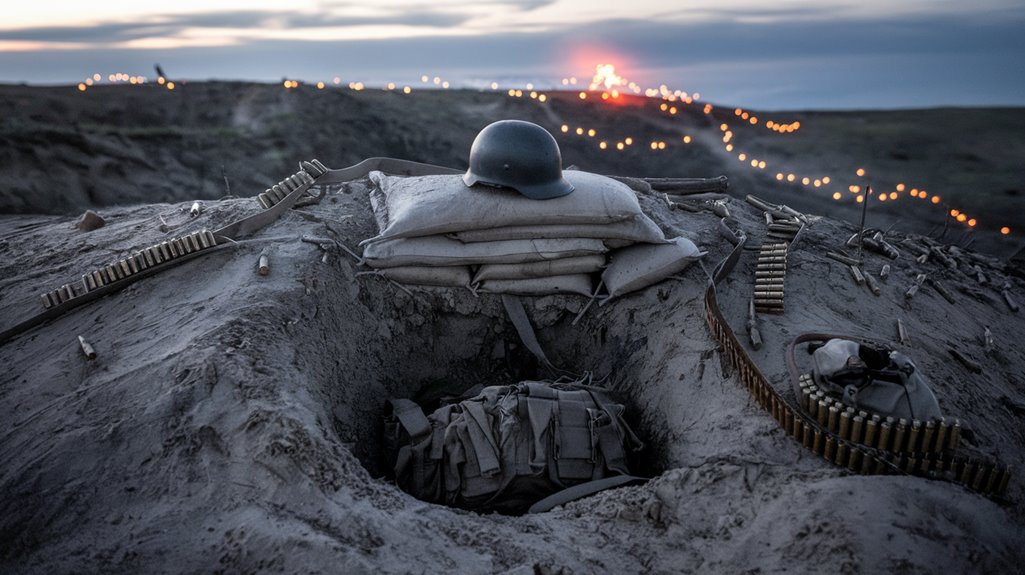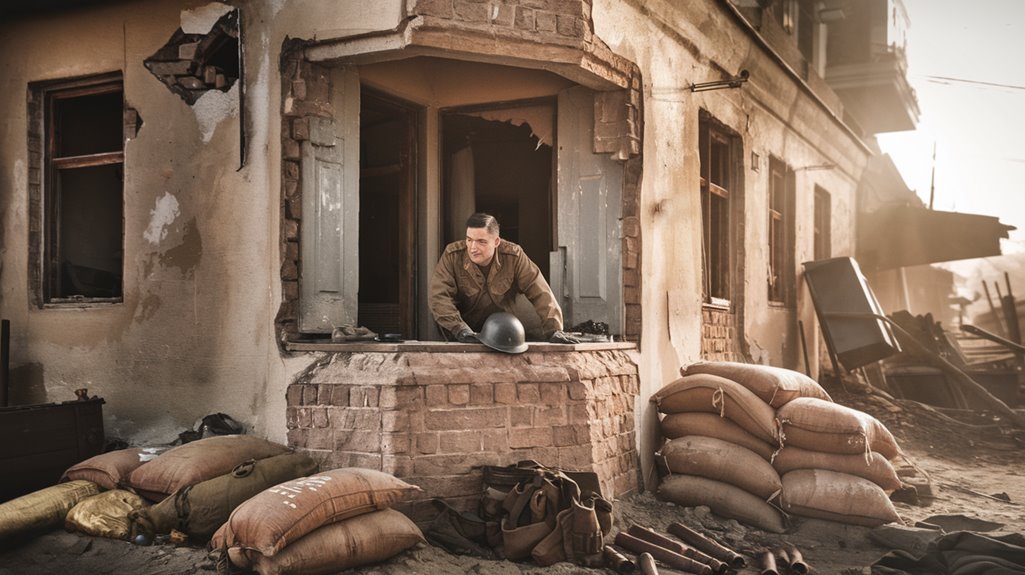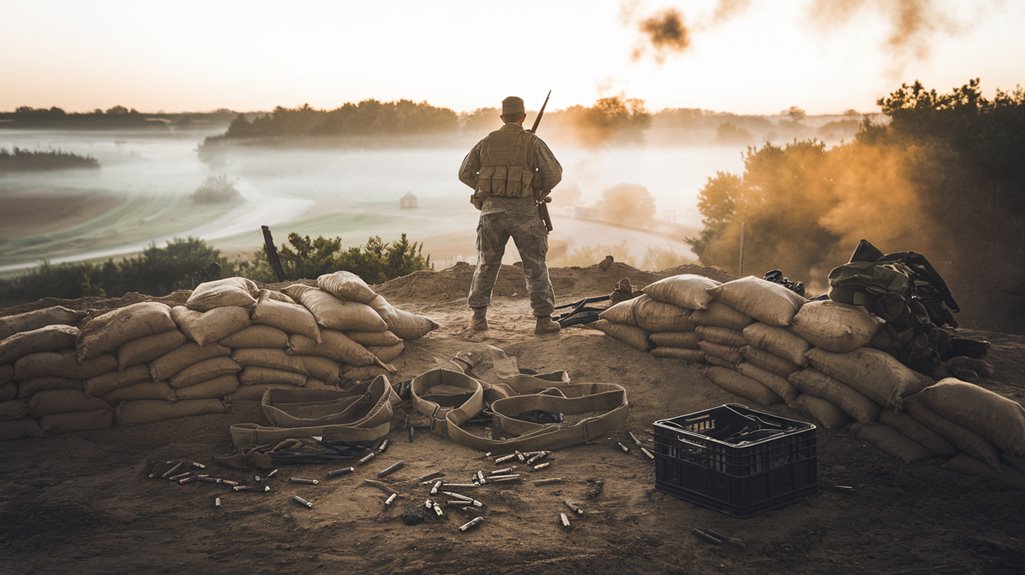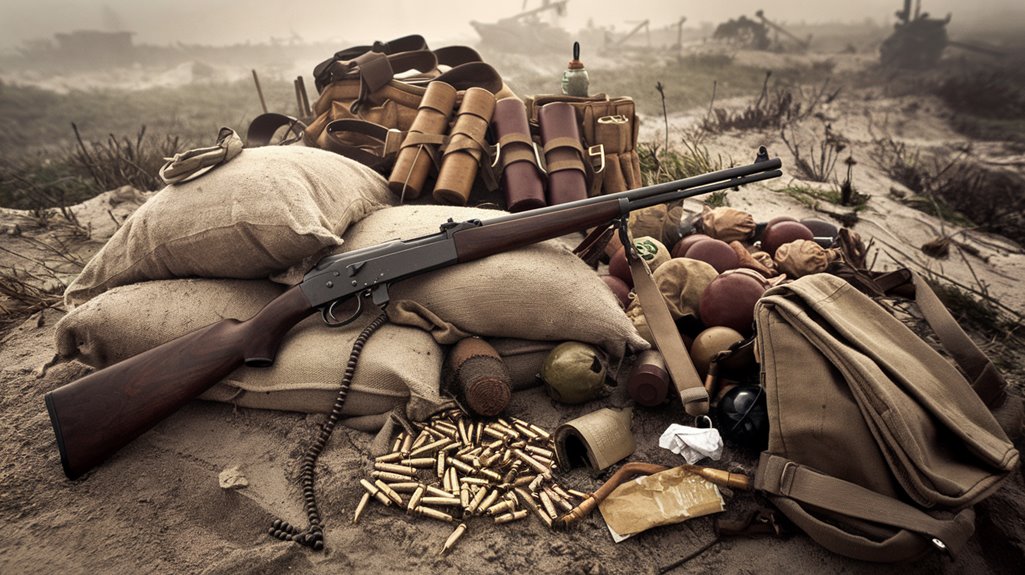A Single Sergeant, Endless Enemies: The Ultimate One-Man Stand
Like a lone wolf separating from its pack to survive against greater predators, you'll find that military history's most remarkable stories often center on individual warriors who faced impossible odds. You've heard tales of heroic last stands, but understanding the tactical genius behind solo operations reveals a deeper truth: proper preparation and strategic thinking can transform a single soldier into an unstoppable force. Whether you're studying military history or exploring modern combat doctrine, these lessons of solitary warfare will reshape your perspective on human potential.
The Essence of One-Man Operations

While conventional military operations rely on unit cohesion and coordinated teamwork, one-man operations demand a unique blend of self-reliance, tactical ingenuity, and psychological resilience.
In tactical isolation, you'll need to master fire and movement techniques typically executed by entire units, adapting them for solo operation. Fire attacks can help determine enemy positions when their presence is suspected but unconfirmed. Remote detonated mines can allow you to execute an isolated defense position when holding ground alone.
Your solo resilience depends on expert reconnaissance and stealth capabilities. You'll need to gather intelligence, maintain situational awareness, and move undetected through hostile territory.
Success hinges on your ability to leverage camouflage, utilize cover effectively, and rapidly adapt to changing circumstances.
Every decision carries significant weight, as you're solely responsible for mission execution, survival, and contingency planning.
Through disciplined resource management and strategic thinking, you must maximize your limited assets while maintaining operational security in enemy territory.
Historical Heroes Who Stood Alone
Throughout history, extraordinary individuals have proven that a single person can dramatically alter the course of events through sheer determination and courage.
You'll find examples of heroic courage in warriors like Aníbal Augusto Milhais, who single-handedly protected retreating troops with his machine gun, and Simo Häyhä, who demonstrated solitary valor by defending Finland against hundreds of Soviet soldiers. At age 19, Yogendra Singh Yadav displayed incredible bravery as he scaled a 17,000-foot cliff while wounded to help secure victory in the Kargil War.
These one-person stands weren't limited to the battlefield. You'll see this same spirit in civilians like Ruby Bridges, who faced angry mobs to integrate schools, and Emily Davison, who sacrificed herself for women's suffrage. The Unknown Rebel demonstrated this courage when he blocked a tank column during the Tiananmen Square protests.
From Alvin York's legendary capture of 132 enemy soldiers to Nelson Mandela's unwavering fight against apartheid, these individuals prove that one person's determination can indeed change the world.
Essential Equipment and Mental Preparation
Standing alone against overwhelming odds requires both physical and mental fortitude. Your equipment selection must include high-quality, durable gear that won't fail when you need it most. Focus on versatile tools that maximize your effectiveness while maintaining mobility and adaptability in challenging situations. Train with free-standing racks to ensure proper form and safety during intense preparation sessions.
Beyond the physical aspects, you'll need unwavering mental resilience to face seemingly impossible odds. Breaking down daunting tasks into five-minute intervals helps maintain focus and prevents feeling overwhelmed. Practice deep breathing exercises and mental rehearsals to strengthen your mind.
Don't let external pressures or others' doubts cloud your judgment – stay focused on what you can control. Visualize success and maintain a clear, focused mindset through mindfulness techniques.
Maximizing Tactical Advantages
Three key principles govern tactical success when facing multiple adversaries: position, deception, and adaptability.
You'll need to leverage high ground and natural barriers while maintaining tactical adaptability in response to enemy movements. Use hull-down positions to maximize cover while retaining offensive capabilities. Like the BOSS program's training, your focus must be on prevention and proactive response to threats. The mandate for health and welfare inspections requires maintaining readiness at all times.
Your survival depends on mastering battlefield deception through feigned retreats and indirect approaches that draw enemies into vulnerable positions.
When confronted with superior numbers, employ the "Four Fs" methodology: find your targets, fix their position, flank their weaknesses, and finish the engagement decisively.
Remember that night operations and low visibility conditions are your allies – they'll help mask your movements and create confusion among enemy ranks.
Stay mobile, use terrain to your advantage, and never let the enemy predict your next move.
Urban Combat Strategies for Solo Missions

When operating alone in urban environments, you'll face unique challenges that demand a methodical approach to survival and mission success. Your stealth tactics become critical, as you won't have the luxury of support fire or team-based maneuvers.
Urban survival depends on your ability to:
- Move silently between buildings, using shadows and covered routes to avoid detection
- Maintain situational awareness by identifying potential ambush points before they're triggered
- Select defendable positions that offer multiple escape routes
- Avoid known avenues of approach that enemies likely monitor
Remember to prioritize reconnaissance before movement, as urban terrain offers countless hiding spots for hostiles.
You'll need to constantly adapt your route based on enemy positions and available cover, making split-second decisions while maintaining operational security. Maintaining deliberate practice through repetitive drills beforehand will help you execute these movements instinctively under pressure.
Every corner and window becomes a potential threat, demanding your complete attention. Anticipate losing 50-75 percent of infantry during small-scale urban engagements, making every tactical decision crucial for survival.
Training and Conditioning for Solo Success
Success in urban solo operations demands peak physical and mental conditioning. You'll need to master an extensive set of solo drills that challenge both your technique and endurance. Training at home provides the perfect environment to build these critical skills.
Start with freestyle shadow boxing for 3-5 rounds, focusing on precise strikes and fluid movement patterns. Integrate bag work to develop power and timing while maintaining proper form. The practice of bouncing a tennis ball while throwing strikes helps develop coordination and reflexes.
Your conditioning methods should combine plyometric exercises with combat-specific movements. Establish a six-day training schedule that alternates between strength work and technical practice.
Incorporate dynamic stretching and footwork drills to enhance your mobility and balance. End each session with kicking burnouts and defensive shadowboxing to simulate real combat scenarios.











